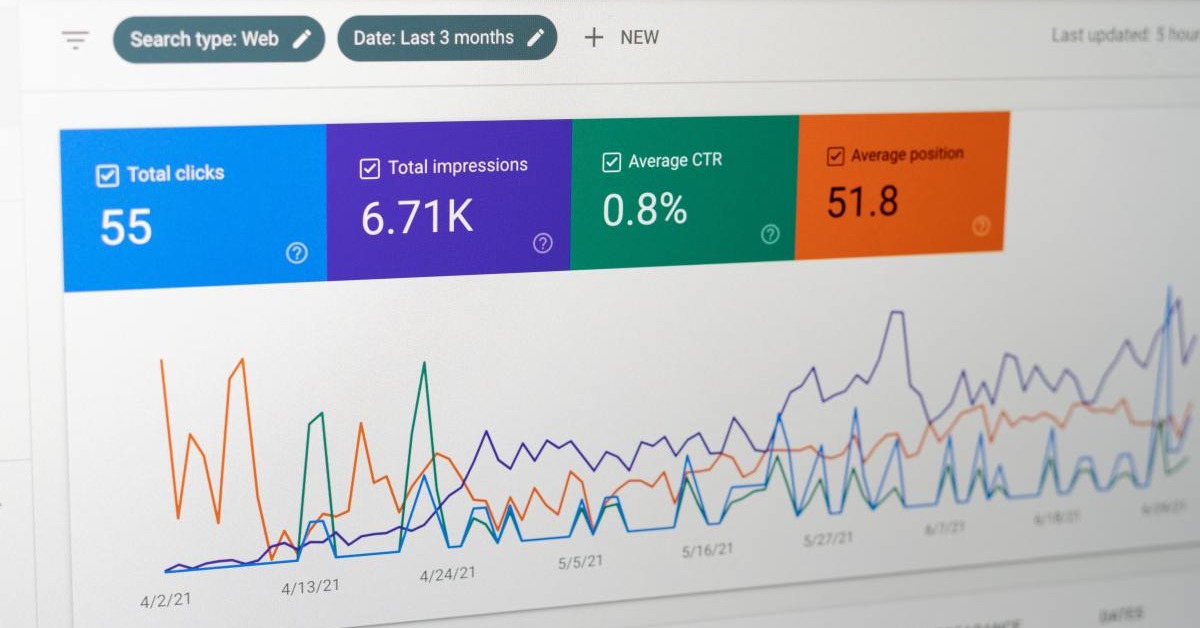
Can I Earn a Master's in Statistics Online?
A master's degree in statistics offers graduates a breadth of [...]
Computer science is a broad discipline encompassing fields as different as software engineering and quantum computing. The job market in the field is equally broad
What does that mean for prospective comp sci hires? First, that there’s no standard cover letter or resume template you can follow when looking for computer science work. You also need to be aware that top tech companies like Apple, Microsoft, and Spotify are highly selective in hiring, so your resume has to make a strong impression.
This guide shows you how to write a computer science resume that gets noticed, whether your area of expertise is cyber security, information systems, or human-computer interaction. However, before you dive in, understand that opportunities in computer science come in many flavors. The biggest mistake you can make when sending out computer science resumes is shooting for jobs clearly beyond the scope of your experience. The skills and competencies on your resume need to match up to what top tech companies are looking for in hires for specific positions.
You also need to accept that your skills and competencies may be out-of-date. Success in this field comes down to lifelong learning. If you’re not a recent BSCS or MSCS graduate and your resume isn’t gelling with recruiter or hiring manager expectations, it may be time to update your skill set or earn a new certification.
In this guide to what top employers want in computer science resumes, we cover:
The outlook for computer science jobs is strong, but projected growth varies by specialty area and location and from company to company. The US Bureau of Labor Statistics (BLS) predicts jobs for software developers, for example, will grow at a rate of 22 percent, while jobs for network and computer systems administrators may only grow at a rate of 4 percent. Cyber security is hot right now, but automation might disrupt that. If jobs in your field are scarce, a resume update can help you break into a new specialty area.
People wrongly assume getting a job in computer science means moving to Silicon Valley. The top cities for computer science jobs are scattered around the country, which means you should search far and wide when looking for opportunities. There are thriving tech hubs and high-profile tech companies in:
Top fields in computer science include:
Be sure your resume highlights skills relevant to your branch of computer science.
The computer science labor market will certainly grow as technology plays an ever larger role in our lives. That doesn’t mean, however, everyone has equal access to expanding opportunities in the field. Women still face discrimination in tech. People of color still encounter institutional roadblocks in computer science. And while organizations and HBCUs with comp sci programs are taking steps to democratize the field, it may be a long time before marginalized groups benefit fully from growth in the market.
According to the BLS, the demand for comp sci professionals will grow at a rate of about 15 percent over the coming decade. Across industries, employers will create 500,000 new tech jobs.
Whether those positions will be filled remains to be seen. The United States’ hasn’t done much to promote computer science education beyond the Obama White House initiative Computer Science for All, and the nation is facing a growing technology skills gap. Millions of tech jobs may go unfilled between now and 2030. It’s bad news for employers but good news for computer scientists.
| University and Program Name | Learn More |
|
The University of Tennessee:
Online Master of Computer Science
|
|
|
Merrimack College:
Master of Science in Computer Science
|
|
|
Stevens Institute of Technology:
Master of Science in Computer Science
|
Putting together a compelling computer science resume that makes companies like Netflix and SpaceX sit up and take notice is nowhere near as challenging as passing a senior-level operating system design course. Whether you’re still working your way through a computer science bachelor’s degree program or you have professional experience and a Master of Science in Computer Science, your resume should showcase not only your skills and expertise in one branch of computer science, but also how those skills and expertise translate into value for potential employers.
Computer science resumes are structured in reverse chronological order, though you can use a functional resume format if you have little or no experience or significant gaps in your career history. There’s no one perfect computer science resume layout because this is such a broad discipline. You should include headers that will best highlight your experience, aptitudes, and achievements.
Most computer science resumes start with an objective summary or experience summary (i.e., your elevator pitch) before moving on to work experience. The education section usually follows. This section can include not only degrees but also boot camps, certificate courses, and even self-directed learning. Other sections commonly found on computer science resumes include:
If the skills section of your computer science resume looks a little bare, remember skills are stackable. Look for ways that your foundational skills can be combined to create additional competencies. Recruiters for big tech companies also want to see how your skills translate into value, so be sure your work experience highlights what you’ve done with your skills.
Computer science professionals across fields have overlapping skills, but the skills on your resume should be field-dependent. You can include relevant programming languages (e.g., Python and JavaScript), platforms, and hard skills in the skills section on your resume.
Feel free to leave soft skills off your resume unless you don’t have much experience and are trying to land one of the many entry-level computer science jobs. Top employers do look for strong communicators who thrive under pressure, but they don’t review resumes with those skills in mind. Google, Microsoft, Apple, Amazon, and other tech companies expect applicants with in-demand technical skills to have the soft skills to back them up. Use the space you would devote to soft skills to highlight tech skills and competencies you’re still developing.
The biggest mistake people make on their resumes is summarizing work experience in terms of what they did instead of the value they generated. The second-biggest mistake they make is assuming they need massive amounts of professional experience. It can’t hurt, but if you don’t have a long job history, other experiences can stand in. The experience section of a computer science resume might include:
Most employers are more interested in your skills and accomplishments than in your formal education, but you still need to include your degrees, certifications, and other schooling on your resume.
Whether you have an associate’s, bachelor’s, master’s, or doctoral degree in computer science, your resume should include the following information:
If you’re just starting out, include honors, awards, and academic achievements. Even hackathon participation can go on your resume.
Recruiters may have questions about your degree because they know online MSCS programs can differ from on-campus programs and that the curriculum in MSCS programs for non-CS majors (including online CS programs for non-CS majors) is often similar to that in bachelor’s programs.
Different computer science degrees lead to different careers in computer science. Don’t go crazy sending resumes to companies looking for computer science master’s program grads if you have an associate’s and very little experience. If you need help finding jobs you’re qualified for, take advantage of your school’s career support programs. Computer science students who graduate from the online MSCS program at Stevens Institute of Technology, for instance, can seek guidance from the Stevens Career Center.
Be specific when listing certifications, certificates, licenses, and other hallmarks of professional development on your resume—but don’t feel like you have to include them all. Make a master list of all your credentials; refer to it when tailoring your resume to positions. Include only what’s relevant.
Your cover letter shouldn’t be a point-by-point summary of your resume. This is where you tell hiring managers and recruiters more about yourself in your voice. Ideally, it demonstrates how your past experiences (educational and professional) can make you an asset to a company.
A great cover letter shows how your qualifications relate to a position. Always double-check that the story you’re telling with your cover letters aligns with what companies ask for in their job descriptions.
First, understand what you’re up against and know your audience. Google, for example, receives three million resumes a year. They tend to look for passion and proof that your past work has had a quantifiable impact—hence their “Do cool things that matter” slogan. The company is also known for hiring PhDs. Job listings can tell you a lot about what skills companies like Facebook and IBM value and the attitudes they want to see in new hires.
Second, keep it concise. As Polonius puts it in Hamlet: “Brevity is the soul of wit.” You could also say brevity is the soul of a strong computer science resume. The average recruiter spends just seven seconds looking at your resume, so lead with an objective summary (if you’ve just graduated from a comp sci bachelor’s program) or an experience summary (if you have relevant experience). A compelling two-sentence summary will inspire recruiters to keep reading instead of moving on to the next resume in the batch of hundreds they review each day.
Finally, never use a one-size-fits-all cover letter or resume. Hiring managers look for enthusiasm in addition to impressive skills and qualifications. They’re trying to determine whether you’re interested in working for a specific employer (versus just getting any job). A boilerplate resume and cover letter won’t convey that. You don’t need to craft fresh ones from scratch for each new employer, but you should tweak them every time you send them out so recruiters and hiring managers can see at a glance whether you’ll be a good fit.
(Updated on February 20, 2024)
(Last Updated on February 26, 2024)
Questions or feedback? Email editor@noodle.com

A master's degree in statistics offers graduates a breadth of [...]

MBA students develop numerous skills through their studies and professional [...]

Most data science professionals have a PhD, but do you [...]

An analytics MBA combines business with big data to prepare [...]

You've seen the ins and outs of running a business [...]
Categorized as: Computer Science, Information Technology & Engineering